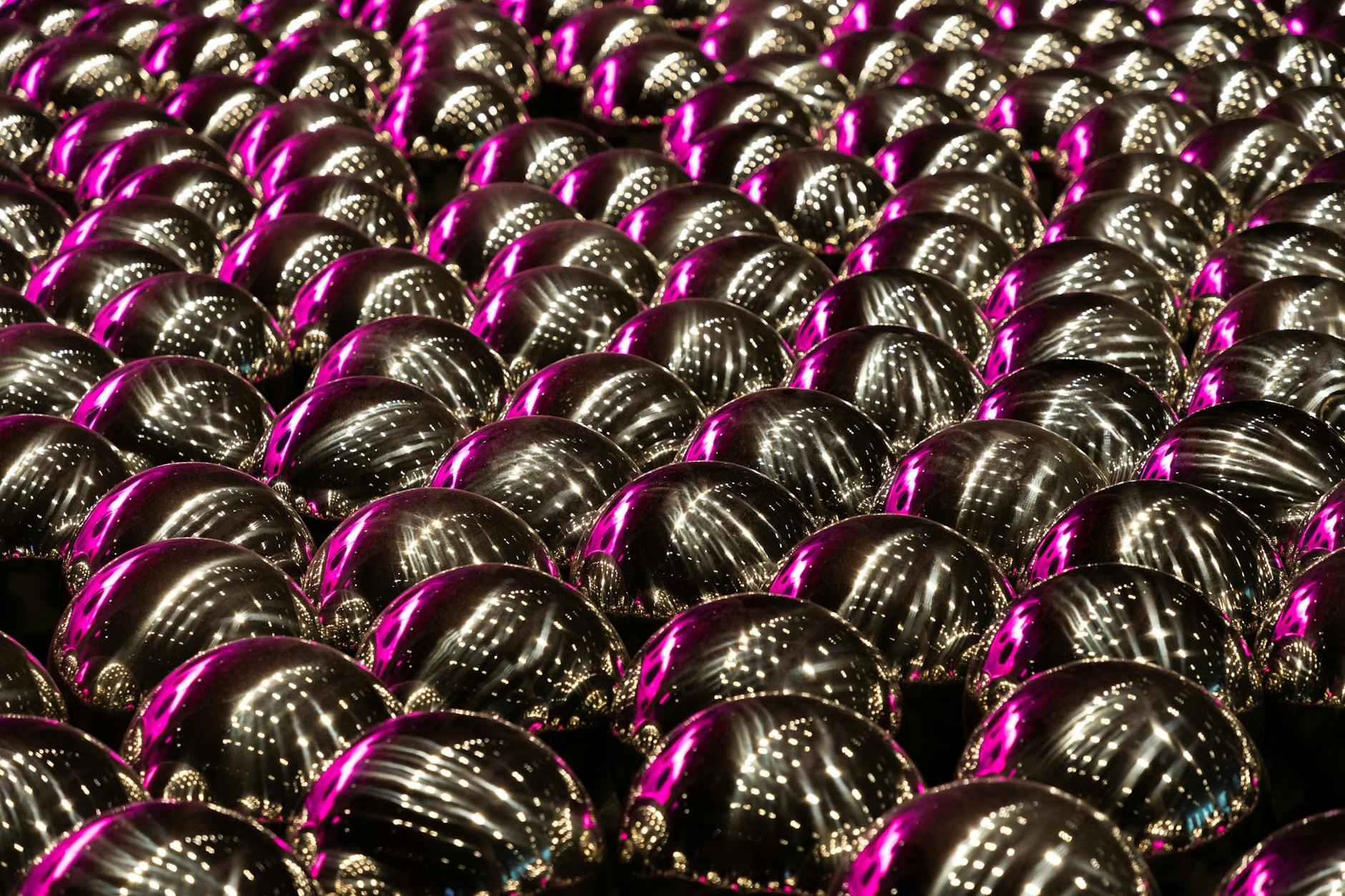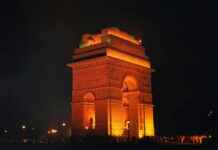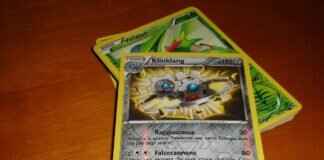New York City is a melting pot of cultures, and the vibrant Indian art scene is a testament to this diversity. This article explores the best Indian art galleries in NYC, showcasing a rich tapestry of Indian culture and artistry. From traditional to contemporary, these galleries not only exhibit art but also serve as cultural hubs for the Indian community and art enthusiasts alike.
Indian art is a reflection of the country’s rich history, diverse cultures, and spiritual traditions. It encompasses various forms, including painting, sculpture, textiles, and pottery. Each art form carries its own significance and tells a story that reflects the socio-political landscape of its time. For instance, traditional Indian paintings like Warli, Madhubani, and Pattachitra are steeped in symbolism and often depict mythological tales, nature, and everyday life.
As India transitioned through colonialism and modernization, the art scene evolved significantly. Contemporary Indian artists are now blending traditional techniques with modern themes, creating a unique fusion that resonates globally. This evolution is essential for understanding the relevance of Indian art today, as it continues to inspire and influence a new generation of artists worldwide.
Art galleries are crucial in preserving and promoting cultural heritage. In New York City, Indian art galleries play a vital role in showcasing the richness of Indian culture and identity. They provide a platform for both established and emerging artists to display their work, ensuring that traditional art forms are not lost in the modern world.
These galleries often host events, workshops, and discussions that engage the community and educate the public about Indian art. By doing so, they foster a deeper appreciation for the cultural narratives embedded in the artwork. Additionally, many galleries collaborate with Indian artists and curators to create exhibitions that highlight the significance of cultural preservation, making them essential players in the ongoing dialogue about identity and heritage.
New York City boasts several prominent Indian art galleries, each offering a unique perspective on Indian culture. Some of the top galleries include:
- Gurukula: The Indian Art Gallery – Known for its extensive collection of traditional and contemporary Indian art, Gurukula features works from both established and emerging artists.
- Chatterjee & Lal – This gallery focuses on contemporary Indian art and often collaborates with international artists, creating a dynamic cultural exchange.
- India Art Collective – This space emphasizes the work of Indian artists in various mediums, from paintings to installations, and hosts regular exhibitions.
These galleries not only showcase art but also serve as cultural centers, hosting events that celebrate Indian traditions, festivals, and contemporary issues.
The Indian art scene in NYC is constantly evolving, with numerous exhibitions scheduled throughout the year. Keep an eye out for:
- “Reflections of India” – An exhibition featuring contemporary interpretations of traditional Indian art forms.
- “Voices of the Diaspora” – A showcase of artists from the Indian diaspora exploring themes of identity and belonging.
- “Heritage in Modernity” – This exhibition highlights the fusion of traditional techniques with modern themes, reflecting the evolution of Indian art.
These exhibitions not only highlight the diversity of Indian art but also encourage dialogue about cultural identity and artistic expression.
Familiarizing oneself with influential Indian artists enhances appreciation for the art. Some notable artists whose works are represented in NYC galleries include:
- Raja Ravi Varma – Often regarded as the father of modern Indian art, his work beautifully blends European techniques with Indian themes.
- Bharti Kher – Known for her thought-provoking installations that often incorporate traditional Indian motifs.
- Subodh Gupta – His contemporary works often reflect the complexities of modern Indian society through the use of everyday materials.
Exploring the works of these artists provides insight into the diverse styles and themes present in the Indian art landscape.
In today’s digital age, virtual tours have become an innovative way to experience art from the comfort of home. Many galleries in NYC have embraced technology, offering online exhibitions and interactive tours that allow art lovers to explore Indian art from anywhere in the world.
These virtual platforms often include detailed descriptions, artist interviews, and educational resources that enhance the viewing experience. They also provide an opportunity for galleries to reach a wider audience, making Indian art accessible to those who may not be able to visit in person.
Art festivals are a vibrant way to celebrate Indian culture through art, music, and performance. Events like the Indian Art Festival and South Asian Arts Festival bring together artists, curators, and enthusiasts to showcase the richness of Indian artistic expression. These festivals often feature workshops, panel discussions, and live performances, creating a dynamic environment for cultural exchange.
Participating in these festivals not only supports the artists but also fosters a sense of community among attendees, allowing for meaningful connections and conversations about art and culture.
Indian art has profoundly influenced global culture, inspiring artists and movements around the world. Its rich symbolism, intricate designs, and spiritual themes resonate with audiences universally. Artists like Yayoi Kusama and Damien Hirst have drawn inspiration from Indian aesthetics, showcasing the global appeal of Indian art.
Furthermore, the rise of Indian artists on international platforms has sparked interest in Indian culture, leading to collaborations and exhibitions that celebrate this diversity. This cross-cultural exchange enriches the global art scene and highlights the significance of Indian art in a broader context.
Supporting local galleries is essential for sustaining the art community. Here are some practical ways to support Indian art galleries in NYC:
- Attend exhibitions and events to show your support and engage with the community.
- Purchase art from local galleries to help artists gain recognition and financial support.
- Spread the word about galleries and their exhibitions through social media and word of mouth.
By actively participating in the art community, you contribute to the preservation and promotion of Indian art and culture.
For those interested in collecting Indian art, understanding the basics is vital. Start by researching various art forms and artists to identify what resonates with you. Consider visiting galleries and exhibitions to gain firsthand experience and insights into the art market.
Additionally, connect with art consultants or attend workshops that focus on collecting Indian art. These resources can provide valuable guidance and help you navigate the complexities of the art market.
Indian art is characterized by a rich variety of styles and techniques. From the intricate details of miniature paintings to the vibrant colors of textile art, each form carries its own unique characteristics. Understanding these styles enhances appreciation for the artistry involved.
Contemporary practices are also gaining popularity, with artists experimenting with new mediums and concepts. This blend of traditional and modern techniques showcases the dynamic nature of Indian art, making it an exciting field to explore.
Building relationships within the art community enriches the experience. Attend gallery openings, artist talks, and workshops to connect with artists, curators, and fellow art enthusiasts. Engaging with the community fosters a deeper understanding of the cultural narratives behind the artwork and creates opportunities for collaboration and dialogue.
Joining online forums or social media groups dedicated to Indian art can also help you stay informed about exhibitions, events, and new artists, further enhancing your connection to the vibrant Indian art scene in NYC.

Understanding Indian Art
Indian art is a vibrant tapestry woven from the threads of history, culture, and tradition. It encompasses a multitude of forms, styles, and techniques that reflect the diverse heritage of the Indian subcontinent. Spanning thousands of years, Indian art has evolved through various dynasties, religions, and cultural exchanges, making it a rich field of study for art enthusiasts and historians alike.
Historically, Indian art can be categorized into several major periods, each characterized by distinct styles and influences. The Indus Valley Civilization (circa 2500-1900 BCE) showcased early forms of pottery and sculpture, while the Mauryan period (circa 322-185 BCE) is known for its monumental architecture and intricate carvings. The subsequent Gupta period (circa 320-550 CE) marked a golden age of Indian art, particularly in sculpture and painting, which laid the foundation for many artistic traditions that followed.
Religious influences have also played a significant role in shaping Indian art. The advent of Buddhism brought about the creation of stupas and intricate sculptures depicting the life of Buddha, while Hinduism contributed to the development of temple architecture and iconography. Islamic art in India, particularly during the Mughal era, introduced new styles, such as intricate floral patterns and calligraphy, which blended with existing traditions to create a unique artistic expression.
In contemporary times, Indian art has continued to evolve, reflecting modern themes and global influences. Artists today experiment with a variety of mediums, including painting, sculpture, installation, and digital art, often addressing social, political, and environmental issues. This evolution demonstrates the adaptability of Indian art, allowing it to remain relevant and engaging in a rapidly changing world.
The significance of Indian art extends beyond aesthetics; it serves as a vital tool for cultural expression and identity. Artworks often convey deep meanings and narratives, connecting individuals to their roots and shared history. The preservation of traditional techniques, such as miniature painting and textile art, is crucial for maintaining cultural heritage, while contemporary practices challenge norms and push boundaries, fostering dialogue within the global art community.
Moreover, Indian art has gained international recognition, with numerous exhibitions and galleries dedicated to showcasing its richness. In cities like New York, art galleries play a pivotal role in promoting Indian artists and their works, facilitating cross-cultural exchanges that enrich the global art landscape. This growing interest in Indian art not only highlights its historical and cultural significance but also emphasizes its ongoing relevance in today’s society.
In summary, understanding Indian art requires an appreciation of its historical context, cultural significance, and contemporary evolution. As a dynamic and multifaceted field, Indian art continues to captivate audiences worldwide, offering insights into the rich tapestry of India’s diverse heritage.

The Role of Art Galleries in Cultural Preservation
Art galleries serve as vital custodians of cultural heritage, playing a significant role in preserving, promoting, and celebrating the diverse artistic expressions of various communities. In New York City, Indian art galleries are particularly noteworthy for their efforts in safeguarding and showcasing the rich tapestry of Indian culture and identity. This section delves into the multifaceted contributions of these galleries to cultural preservation.
- Showcasing Traditional Art Forms: Indian art is characterized by its rich traditions, including classical dance, music, and visual arts. Galleries such as the Gandhi Museum and Chamak actively curate exhibitions that feature traditional art forms like Madhubani and Pattachitra. By doing so, they ensure that these ancient practices are not forgotten, providing a platform for artists to share their heritage with a broader audience.
- Promoting Contemporary Artists: In addition to traditional forms, Indian art galleries also focus on contemporary artists who blend traditional techniques with modern themes. This approach not only keeps the art relevant but also engages younger generations. For instance, artists like Subodh Gupta and Bharti Kher are often featured in exhibitions, bridging the gap between past and present.
- Educational Programs and Workshops: Many galleries offer workshops and educational programs aimed at fostering an appreciation for Indian art among diverse audiences. These initiatives often include lectures, artist talks, and hands-on workshops that allow participants to engage directly with the art and its cultural significance. Such programs are essential for cultivating a deeper understanding and appreciation of Indian heritage.
- Community Engagement: Indian art galleries frequently collaborate with local communities to host cultural events, festivals, and exhibitions that celebrate Indian heritage. These events not only draw in Indian expatriates but also engage the wider public, creating a dialogue about cultural identity and diversity.
- Archiving and Documentation: Galleries play a crucial role in the archiving and documentation of Indian art. By maintaining collections that reflect the evolution of Indian artistic expression, they provide valuable resources for researchers, students, and art enthusiasts. This archival work is essential for ensuring that future generations have access to the rich history of Indian art.
In addition to these contributions, Indian art galleries in NYC also facilitate international dialogues about cultural identity. By hosting exhibitions that feature both Indian and international artists, they create a platform for cross-cultural exchange. This not only enhances the visibility of Indian art on the global stage but also fosters a greater understanding of the complexities of cultural identity in a multicultural world.
Through their multifaceted approaches to cultural preservation, Indian art galleries in New York City are not just spaces for viewing art; they are dynamic cultural hubs that celebrate and sustain the richness of Indian heritage. By showcasing traditional and contemporary works, engaging with the community, and providing educational opportunities, these galleries play an indispensable role in keeping Indian culture alive and thriving in a global context.

Top Indian Art Galleries in New York City
New York City is a melting pot of cultures, and its art scene is no exception. Among the various artistic expressions, Indian art holds a significant place, showcasing a rich tapestry of history, tradition, and contemporary creativity. This section highlights some of the most prominent Indian art galleries in NYC, each offering unique exhibitions and collections that reflect the diverse aspects of Indian artistry.
- Asia Society Museum: Located on the Upper East Side, the Asia Society Museum is renowned for its extensive collection of Asian art, including a significant focus on Indian works. The museum hosts rotating exhibitions that feature both traditional and contemporary Indian artists, offering visitors an insight into the evolving landscape of Indian art.
- Galleries at the Rubin Museum of Art: The Rubin Museum is dedicated to Himalayan and Indian art, featuring a variety of exhibitions that explore the connections between art, culture, and spirituality. The museum often collaborates with Indian artists and curators to present thought-provoking installations and collections that engage with contemporary issues.
- Chitra Ganesh Studio: This gallery showcases the works of Chitra Ganesh, a prominent Indian-American artist known for her vibrant and narrative-driven pieces. The studio often hosts exhibitions that challenge traditional narratives and explore themes of identity, gender, and mythology, making it a must-visit for those interested in contemporary Indian art.
- Indian Art Collective: This collective brings together a diverse group of Indian artists, providing a platform for emerging and established talent. The gallery hosts regular exhibitions, workshops, and events that celebrate Indian culture and art, making it a vibrant hub for art enthusiasts.
- Gallery 151: Known for its eclectic mix of modern and traditional Indian art, Gallery 151 focuses on promoting Indian artists in the global market. The gallery features a rotating selection of works, including paintings, sculptures, and mixed-media installations that highlight the diversity of Indian artistic expression.
- Ojas Art: Ojas Art specializes in contemporary Indian art, offering a curated selection of works from both established and emerging artists. The gallery is known for its commitment to promoting Indian art on an international scale, making it an essential stop for collectors and art lovers alike.
Each of these galleries plays a vital role in not only showcasing Indian art but also in fostering a deeper understanding of its cultural significance. They provide a platform for dialogue and engagement, allowing visitors to explore the multifaceted nature of Indian art and its impact on both local and global art scenes.
Whether you are an art enthusiast, a collector, or simply curious about Indian culture, these galleries offer a wealth of knowledge and inspiration. From traditional masterpieces to contemporary innovations, the Indian art galleries in New York City invite you to explore the richness of Indian artistry and its ongoing evolution in the modern world.

Upcoming Exhibitions to Watch
As the cultural landscape in New York City continues to evolve, the Indian art scene remains a vibrant and dynamic part of it. Numerous exhibitions are scheduled to showcase both contemporary and traditional Indian art, offering a unique opportunity for art enthusiasts and the general public to engage with the rich heritage of Indian artistry. This section highlights some of the most anticipated upcoming exhibitions that art lovers should mark on their calendars.
- Exhibition of Contemporary Indian Artists: This exhibition will feature a diverse group of contemporary Indian artists whose works challenge traditional narratives and explore modern themes. Expect to see a range of mediums, including painting, sculpture, and multimedia installations. The exhibition aims to provide a platform for emerging voices in the Indian art world, making it a must-visit for anyone interested in current artistic trends.
- Traditional Indian Art Forms: Scheduled to open next month, this exhibition will delve into the rich tapestry of traditional Indian art forms, including miniature painting, block printing, and textile art. Visitors will have the chance to witness the intricate craftsmanship and cultural significance behind these art forms, often passed down through generations of artisans.
- Indian Art and Global Influence: This upcoming exhibition will explore the impact of Indian art on global artistic movements. Featuring works from both Indian and international artists, the exhibition will highlight how Indian aesthetics have influenced contemporary art practices worldwide. It promises to be an enlightening experience for those interested in the interconnectedness of global art.
- Art and Activism: A groundbreaking exhibition focusing on the intersection of art and social justice is set to launch later this year. It will showcase works by Indian artists who use their art as a medium for activism, addressing pressing social issues and advocating for change. This exhibition aims to inspire dialogue and reflection on the role of art in society.
- Emerging Talents: This exhibition will spotlight young and upcoming artists from India, providing them with a platform to present their innovative works. Expect a mix of styles and techniques, reflecting the evolving nature of Indian art. Visitors will have the opportunity to engage with the artists themselves during opening receptions and artist talks.
In addition to these exhibitions, many galleries will host workshops and artist talks that allow attendees to gain deeper insights into the creative processes and cultural contexts of the works on display. These events not only enhance the viewing experience but also foster a sense of community among art lovers.
To stay updated on these exhibitions, consider subscribing to newsletters from local galleries or following them on social media. Many galleries also offer virtual tours and online viewing rooms, making it easier for those unable to visit in person to experience the richness of Indian art.
As the art scene continues to thrive, these upcoming exhibitions promise to be enlightening and enriching experiences for anyone looking to explore the diverse expressions of Indian culture. Whether you are an art aficionado or a casual visitor, the Indian art exhibitions in NYC offer something for everyone.

Notable Indian Artists to Discover
Familiarizing oneself with influential Indian artists enhances appreciation for the art. The Indian art scene is rich and diverse, featuring a plethora of talented individuals whose works reflect the country’s vibrant culture and history. In this section, we will profile some notable Indian artists whose works are represented in NYC galleries, providing insights into their contributions and significance.
- Raja Ravi Varma: Often regarded as one of the most significant painters in Indian history, Raja Ravi Varma’s work beautifully merges traditional Indian themes with European techniques. His portrayal of mythological figures and scenes has made a lasting impact on Indian art. Many of his prints can be found in galleries across New York City, allowing audiences to appreciate his mastery of color and form.
- Tyeb Mehta: A pivotal figure in the modern Indian art movement, Tyeb Mehta is known for his bold compositions and emotive use of color. His works often reflect themes of struggle and transcendence. Mehta’s pieces are frequently showcased in prominent galleries, where they continue to resonate with viewers, emphasizing the emotional depth of his subjects.
- Bharti Kher: A contemporary artist, Bharti Kher is celebrated for her innovative use of materials and her exploration of identity and culture. Her installations often incorporate traditional Indian motifs, such as the bindi, which she uses to comment on gender and social issues. Kher’s work can be seen in various exhibitions in NYC, where it sparks conversations about modern Indian society.
- Subodh Gupta: Known for his unique approach to mixed media, Subodh Gupta combines everyday objects with traditional artistic techniques to create thought-provoking installations. His work often addresses themes of globalization and identity, making it highly relevant in today’s art discourse. Gupta’s pieces are featured in several New York galleries, captivating audiences with their intricate narratives.
- Anish Kapoor: An internationally acclaimed artist, Anish Kapoor is known for his large-scale sculptures and installations that challenge perceptions of space and form. Kapoor’s work often explores themes of void and presence, inviting viewers to engage with the physicality of art. His exhibitions in NYC have garnered significant attention, showcasing his innovative approach to sculpture.
- Nandini Valli Muthiah: A rising star in the contemporary art scene, Nandini Valli Muthiah’s work is characterized by its intricate layering and use of traditional Indian techniques. Her pieces often reflect her experiences and observations of urban life in India, making them relatable to a global audience. Muthiah’s art is increasingly featured in NYC galleries, highlighting her unique perspective.
These artists not only represent the rich tapestry of Indian art but also contribute to the global dialogue on culture and identity. Their works challenge viewers to engage with complex themes and offer a deeper understanding of the evolving nature of Indian art. By exploring their contributions, one can gain a greater appreciation for the diversity and richness that Indian artists bring to the international art scene.

Virtual Tours: Exploring Indian Art from Home
In today’s fast-paced digital landscape, the accessibility of art has transformed dramatically. Virtual tours have emerged as a revolutionary way to experience art, particularly for those interested in the rich tapestry of Indian culture. These digital experiences allow art enthusiasts to immerse themselves in Indian art from the comfort of their own homes, breaking geographical barriers and making art more accessible than ever.
Art galleries across New York City are increasingly leveraging technology to offer virtual access to their collections. This initiative not only caters to local audiences but also reaches a global audience eager to explore Indian art. Through high-quality video tours, interactive exhibitions, and engaging online content, galleries are creating immersive experiences that rival in-person visits.
One of the key benefits of virtual tours is the ability to view art up close. Many galleries provide detailed high-resolution images that allow viewers to appreciate intricate details and textures that might be missed in a traditional setting. This level of detail enhances the viewer’s understanding and appreciation of various Indian art forms, from traditional paintings to contemporary installations.
Moreover, virtual tours often include expert commentary and guided narratives that enrich the viewing experience. Curators and artists share insights about the works, discussing the historical context, cultural significance, and the techniques employed in each piece. This educational component fosters a deeper connection between the viewer and the artwork, making it a valuable resource for both art lovers and scholars alike.
Many galleries also host live virtual events, such as artist talks and panel discussions, which allow for real-time interaction. These events create a sense of community and engagement, replicating the social aspect of visiting a gallery in person. Participants can ask questions, share their thoughts, and connect with others who share their passion for Indian art.
Furthermore, virtual tours provide an excellent opportunity for galleries to showcase up-and-coming artists who may not yet have a significant physical presence in the art world. By featuring these artists in virtual exhibitions, galleries can help to elevate their profiles and reach a wider audience, which is crucial for their development and success.
As technology continues to advance, the potential for virtual tours to evolve is limitless. Future innovations may include augmented reality experiences, allowing viewers to visualize art in their own spaces, or virtual reality setups that create fully immersive environments. These advancements will further enhance the way we experience and interact with Indian art.
In conclusion, virtual tours are reshaping the landscape of art appreciation, especially in the context of Indian art. By embracing technology, galleries are not only preserving cultural heritage but also ensuring that the beauty and significance of Indian art are accessible to everyone, everywhere. Whether you are a seasoned art collector or a curious newcomer, exploring Indian art through virtual tours offers a unique and enriching experience that transcends traditional boundaries.

Indian Art Festivals in NYC
Indian art festivals in New York City serve as vibrant platforms that celebrate the richness of Indian culture through various artistic expressions. These festivals not only showcase traditional art forms but also embrace contemporary practices, creating a dynamic fusion that resonates with a diverse audience. Each festival presents a unique opportunity for artists, performers, and art enthusiasts to come together, fostering a sense of community and cultural exchange.
One of the most prominent festivals is the India Day Parade, which takes place annually in August. This event is not just a parade; it is a grand celebration of Indian independence, featuring colorful floats, traditional music, and dance performances. The parade transforms the streets of Manhattan into a vibrant tapestry of Indian culture, where attendees can witness the rich traditions of India, from classical dance forms like Bharatanatyam to contemporary fusion performances.
Another significant event is the New York Indian Film Festival, which showcases films that highlight the diverse narratives of the Indian subcontinent. This festival provides a platform for filmmakers and artists to present their work, facilitating discussions on important social and cultural issues. The intersection of cinema and art in this festival allows for a broader understanding of Indian culture, making it accessible to a wider audience.
Additionally, the South Asian Arts Festival is a celebration of the arts, featuring a variety of performances, workshops, and exhibitions. This festival emphasizes the importance of cultural preservation while encouraging innovation within traditional art forms. Workshops led by renowned artists provide attendees with hands-on experience in various artistic techniques, from traditional painting to modern digital art.
Moreover, the Festival of India, held at various venues across the city, showcases a rich array of artistic expressions, including music, dance, and visual arts. This festival often features renowned artists from India, who perform alongside local talents, creating a unique blend of styles and traditions. The festival serves as a reminder of the deep-rooted connections between Indian culture and the broader artistic landscape of New York City.
These festivals not only promote Indian art but also encourage cultural exchange and understanding among diverse communities. They offer a platform for artists to engage with audiences, share their stories, and inspire others through their work. As the art scene in NYC continues to evolve, the presence of Indian art festivals remains vital in keeping the spirit of Indian culture alive and thriving.
In conclusion, Indian art festivals in New York City are a testament to the rich cultural heritage of India. They bring together artists from various backgrounds, allowing for a celebration of diversity and creativity. By participating in these festivals, attendees can gain a deeper appreciation for Indian art and its impact on the global cultural landscape.

The Impact of Indian Art on Global Culture
Indian art, with its rich history and diverse expressions, has significantly influenced global culture. From ancient sculptures to contemporary installations, the visual language of Indian art transcends geographical boundaries, inspiring artists and movements worldwide. This section explores the various ways in which Indian art has made its mark on the international stage, showcasing its universal appeal and relevance.
One of the most notable aspects of Indian art is its spiritual and philosophical depth. Traditional Indian art forms, such as classical dance, music, and painting, often draw upon themes from spirituality and mythology. This connection to the divine resonates with audiences globally, as many artists find inspiration in the intricate narratives and symbolism present in Indian artworks. For instance, the intricate patterns and colors found in Madhubani paintings or the delicate strokes of miniature art have captivated artists across the world, leading to a fusion of styles that blend Indian traditions with contemporary practices.
Furthermore, Indian art has played a pivotal role in the evolution of various art movements. The Modern Art Movement in the early 20th century saw Indian artists like Raja Ravi Varma and Amrita Sher-Gil incorporate Western techniques while staying rooted in Indian themes. Their works not only challenged the norms of their time but also opened doors for future generations of artists to explore their cultural identities within a global context. This blending of styles has encouraged a dialogue between Eastern and Western art, fostering a greater appreciation for cultural diversity.
Moreover, the global fascination with Indian textiles, particularly block printing and handloom weaving, has led to the incorporation of Indian motifs in fashion and interior design worldwide. Renowned designers often draw upon Indian patterns and craftsmanship, celebrating the intricate artistry that has been passed down through generations. This cross-cultural exchange highlights the adaptability and timelessness of Indian art, allowing it to thrive in various contexts.
In addition, Indian art festivals and exhibitions held around the world serve as platforms for cultural exchange and collaboration. Events such as the India Art Fair and the Jaipur Literature Festival attract artists, curators, and art enthusiasts from diverse backgrounds, fostering a sense of community and shared appreciation for creativity. These gatherings not only showcase the richness of Indian art but also encourage dialogue about pressing global issues, such as sustainability and social justice, through the lens of artistic expression.
Furthermore, the rise of digital platforms has enabled Indian artists to reach a global audience like never before. Online galleries and social media have become vital tools for artists to share their work, connect with collectors, and engage with art lovers worldwide. This digital presence allows for a broader dissemination of Indian art, promoting its significance and relevance in contemporary society.
In conclusion, the impact of Indian art on global culture is profound and multifaceted. Its ability to inspire, connect, and provoke thought makes it a vital part of the international art landscape. As artists continue to explore and reinterpret Indian traditions, the global art community will undoubtedly benefit from the rich tapestry of creativity that Indian art offers.

How to Support Indian Art Galleries
Supporting local galleries is essential for sustaining the art community. In New York City, where the art scene is both vibrant and diverse, Indian art galleries play a crucial role in promoting cultural heritage. This section outlines practical ways to support these galleries, ensuring they continue to flourish and contribute to the rich tapestry of Indian art.
One of the most direct ways to support Indian art galleries is by attending their events and exhibitions. These gatherings not only showcase the works of talented artists but also foster a sense of community among art lovers. By participating in opening receptions, artist talks, and panel discussions, you not only enrich your own understanding of Indian art but also demonstrate your support for the artists and the gallery. Many galleries offer free entry to these events, making it accessible for everyone to engage with the art community.
Purchasing art is a powerful way to support galleries and artists alike. When you buy a piece from an Indian art gallery, you are directly contributing to the livelihood of artists and the sustainability of the gallery itself. This can include not only original artworks but also prints, books, and other merchandise that reflect the gallery’s offerings. Many galleries also provide payment plans or financing options to make art more accessible to collectors at various levels.
Many galleries offer membership programs that provide exclusive benefits, such as early access to exhibitions, invitations to special events, and discounts on artwork. Becoming a member is a meaningful way to show your commitment to the gallery’s mission. Additionally, consider becoming a patron, which involves making a larger financial commitment to support the gallery’s operations and programming. Patrons often receive personalized engagement opportunities, such as private tours and behind-the-scenes access to exhibitions.
Another impactful way to support Indian art galleries is by spreading the word. Utilize social media platforms to share your experiences at galleries, post about upcoming exhibitions, and highlight the artists you admire. Word-of-mouth recommendations can significantly increase attendance and interest in gallery events. Consider writing reviews on platforms like Google or Yelp, which can help others discover these cultural gems in NYC.
If you have a passion for art and community engagement, consider volunteering at a local Indian art gallery. Many galleries rely on volunteers for various tasks, from organizing events to assisting with administrative duties. Volunteering not only helps the gallery but also provides you with a deeper insight into the inner workings of the art world and the opportunity to connect with artists and other art enthusiasts.
Many Indian art galleries in NYC offer educational programs, workshops, and artist residencies aimed at fostering a deeper appreciation for Indian art and culture. Supporting these initiatives, whether through attendance or financial contributions, helps ensure that future generations can engage with and learn from this rich artistic heritage. Look for opportunities to participate in or donate to educational programs that resonate with your interests.
By actively engaging with Indian art galleries in New York City through these various methods, you contribute to the sustainability of the art community. Your support not only helps preserve Indian culture but also enriches your own life through the beauty and diversity of art.

Art Collecting: A Guide for New Enthusiasts
For those who are captivated by the allure of Indian art, embarking on a journey as a collector can be both exciting and daunting. Understanding the basics of art collecting is essential for anyone looking to navigate the intricate Indian art market. This guide aims to provide new collectors with valuable insights and tips to help them make informed decisions and develop a meaningful collection.
Indian art is a vibrant tapestry of culture, history, and tradition. Collecting Indian art allows enthusiasts to connect with the rich heritage of India while also supporting artists and preserving their work. Each piece tells a story, reflecting the diverse influences of various regions, religions, and periods in Indian history.
- Traditional Art: This includes ancient forms such as miniature paintings, madhubani, and warli art, which are steeped in cultural significance.
- Modern and Contemporary Art: Artists today blend traditional techniques with modern themes, offering fresh perspectives that resonate with global audiences.
- Textile Art: Indian textiles, including block prints and embroideries, are celebrated for their intricate designs and craftsmanship.
Before making a purchase, it is crucial to conduct thorough research. Understanding the artist’s background, the art’s provenance, and its market value can significantly influence your decision. Look for certificates of authenticity and consult with experts or established galleries to verify the artwork’s legitimacy.
Establishing a budget is vital for new collectors. Indian art can vary widely in price, so understanding what you can afford will help narrow your options. Consider starting with smaller pieces or prints before investing in larger, more expensive works. Attending auctions, art fairs, and gallery openings can provide opportunities to purchase art directly from artists or reputable dealers.
Connecting with artists and gallery owners can enrich your collecting experience. Attend openings, artist talks, and exhibitions to engage with the community. Building relationships can lead to exclusive opportunities, such as private viewings or early access to new works.
Art fairs and exhibitions are excellent venues for discovering new artists and trends in Indian art. These events often showcase a variety of styles and mediums, providing a comprehensive view of the current art scene. Participating in these events can also help you network with fellow collectors and art enthusiasts.
Collecting Indian art is not just about acquiring pieces; it’s about embracing a journey of discovery and appreciation. Each artwork you collect adds to your personal narrative and connects you to the broader cultural landscape of India. Stay curious, remain open to learning, and enjoy the process of building your collection.

Exploring Indian Art Styles and Techniques
Indian art is a vibrant tapestry woven from a multitude of styles, techniques, and traditions, each with its own unique story and cultural significance. This section delves into the rich diversity of Indian art forms, highlighting some of the most distinctive techniques, including miniature painting, textile art, and contemporary practices.
Miniature Painting: A Historical Perspective
Miniature painting is one of the most celebrated forms of Indian art, known for its intricate detail and vibrant colors. Originating in the royal courts of India, particularly during the Mughal era, these paintings were often created on small surfaces such as paper or ivory. Artists employed fine brushes made from squirrel hair to achieve the precision required for such detailed work. The subjects of these paintings ranged from mythological scenes to courtly life, reflecting the cultural and social dynamics of the time. Today, miniature painting continues to be practiced in various regions of India, preserving traditional techniques while also integrating modern themes.
Textile Art: Weaving Stories Through Fabric
Textile art in India is another significant aspect, showcasing the country’s rich heritage in fabric and design. From the intricate embroideries of Gujarat to the luxurious silks of Varanasi, Indian textiles are renowned worldwide. Techniques such as block printing, tie-dye, and weaving are employed to create stunning patterns and textures. Each region has its own distinctive style, often influenced by local traditions and natural resources. For instance, the Kanchipuram silk sarees of Tamil Nadu are famed for their lustrous finish and elaborate designs, making them a favorite among brides. The revival of traditional textile art forms has also gained momentum, with many artisans embracing sustainable practices to appeal to contemporary consumers.
Contemporary Practices: A Fusion of Tradition and Modernity
As Indian art evolves, contemporary practices are emerging that blend traditional techniques with modern themes and mediums. Artists are increasingly experimenting with new materials, such as mixed media and digital art, while still drawing inspiration from their cultural roots. This fusion creates a dynamic dialogue between the past and the present, allowing artists to address contemporary issues through the lens of their heritage. For instance, artists like Subodh Gupta and Bharti Kher utilize everyday materials to create thought-provoking installations that challenge societal norms and provoke discussions about identity, globalization, and cultural heritage.
The Importance of Cultural Context
Understanding the various styles and techniques of Indian art requires an appreciation of the cultural context in which they were developed. Each art form is not just a visual representation; it carries with it the history, beliefs, and values of the society it originates from. This context enriches the viewer’s experience, allowing for a deeper connection with the artwork. Indian art serves as a reflection of the country’s diverse cultural landscape, showcasing the interplay of tradition and innovation.
In conclusion, the exploration of Indian art styles and techniques reveals a fascinating interplay between history, culture, and modernity. From the meticulous details of miniature paintings to the vibrant expressions found in textile art and contemporary practices, each form offers a unique glimpse into the rich tapestry of Indian heritage.

Connecting with the Indian Art Community
Building connections within the Indian art community is not just beneficial; it is essential for anyone looking to deepen their understanding and appreciation of this rich cultural landscape. In New York City, a melting pot of cultures, the Indian art scene is vibrant and diverse, offering numerous opportunities to engage with artists, curators, and fellow enthusiasts.
- Attend Art Openings and Exhibitions: One of the most effective ways to connect with the Indian art community is by attending gallery openings and exhibitions. These events are often buzzing with excitement and provide a platform for artists to showcase their work. Engaging in conversations with artists and curators during these events can lead to meaningful relationships.
- Join Art Workshops and Classes: Participating in workshops or classes focused on Indian art techniques, such as miniature painting or block printing, allows you to not only learn but also meet like-minded individuals who share your passion. These settings foster collaboration and friendship among participants.
- Volunteer at Art Organizations: Many art galleries and cultural organizations in NYC rely on volunteers to help with events and exhibitions. Volunteering can provide you with a behind-the-scenes look at the art world and allow you to connect with artists and curators on a more personal level.
- Engage on Social Media: The digital age has made it easier than ever to connect with the art community. Follow Indian artists, galleries, and cultural organizations on platforms like Instagram and Twitter. Engaging with their content can lead to online conversations that may transition into real-life connections.
- Participate in Cultural Festivals: NYC hosts numerous festivals celebrating Indian culture, including art fairs and cultural showcases. These events often feature a variety of artistic expressions, providing a fantastic opportunity to connect with artists and fellow art lovers.
Networking within the Indian art community can also be enhanced through formal and informal gatherings. Many artists and curators host discussions or panels about contemporary issues in art, which not only provide insights but also create networking opportunities.
Moreover, consider joining local art associations or groups focused on Indian art. These organizations often host events, provide resources, and facilitate connections among members. Engaging with these groups can help you stay informed about the latest developments in the Indian art scene and provide a sense of belonging.
In addition to these strategies, attending lectures and panel discussions at museums and galleries can enrich your understanding of Indian art and connect you with experts in the field. These events often attract a diverse audience, including artists, curators, and collectors, providing a rich environment for networking.
Finally, always approach interactions with genuine curiosity and respect. Building relationships in the art community is about creating lasting connections based on shared interests and mutual appreciation for the art. By immersing yourself in the community and actively participating in its events, you will not only enhance your own experience but also contribute to the vibrancy of the Indian art scene in New York City.














